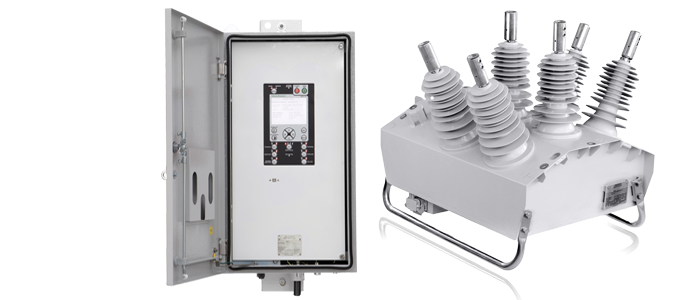- +61 7 3374 2877
- Email Us
Phasor Measurement Units (PMUs) and Synchrophasor data acquisition represent promising options for rapid, safe and reliable integration and control of renewable energy to the electricity distribution grid. A project to evaluate the benefits of deploying PMU data has been under sponsorship from the Australian Renewable Energy Agency in partnership with NOJA Power, Electricity Utilities and Universities in Australia.
The PMU units were integrated into Recloser Controllers and deployed at 100 sites throughout Australia. This article explores the technical findings of this first grid scale deployment, demonstrating the value and justification for further adoption of this technology.
Synchrophasor Definition
A synchrophasor is a time-synchronised measurement of power system measurements [1]. Core benefits of synchrophasor data, when compared to conventional measurements, are their higher reporting rate, their GPS synchronised values and phase angle measurements. Synchrophasor data are reported every tens of milliseconds, while traditional systems such as SCADA report once per several seconds.
PMUs are a functional or logical device that provides synchrophasor measurements, system frequency and rate of change of frequency estimates [2]. NOJA Power’s RC20 Recloser Controller is an example of integrated PMU capabilities. A photo of an RC20 with an outdoor switching module (OSM) is given in Figure 1.
The RC20’s integrated PMU generates high resolution power system data, improving the visibility and modelling of the power system. Data collected from RC20s are sent through a secure 4G Virtual Private Network (VPN) to the NOJA Power Analytics platform. Located on a virtual machine, this platform includes a Phasor Data Concentrators (PDC), a visualisation tool and a historian. The NOJA Power PDC aggregates and time-aligns synchrophasor data received from RC20s across the network. The visualisation tool and a data archiving platform are developed to facilitate storage, monitoring and big data analysis.

Synchrophasor Monitoring Applications
Synchrophasors have many monitoring and control applications in the distribution grid [3]. Here we will discuss some of the monitoring applications using real network data collected from installed RC20s in the Medium Voltage (MV) grid.
“The NOJA Power Cloud Analytics product is a powerful tool for our utility customers to stream, collect, store and analyse big data to ultimately get better vision on their networks to then plan further performance and reliability improvement,” reports NOJA Power Group Managing Director Neil O’Sullivan.
A. Load Characterisation
Examining historical data with milli second resolution helps utilities to have a better understanding of the loads connected to their networks. This helps operators to manage their grids in a more reliable and efficient way. Figure 3 and 4 are historical current magnitudes over four days from two different RC20 connections. It can clearly be seen that the first unit (Figure 3) is an industrial load consuming power from morning to the evening while the second load (Figure 4) is a residential area with small morning peak and large evening peaks.
The load characterisation will also help in understanding the rooftop solar impact on load and network voltages. Figure 5 illustrates load shape of two residential areas. While both areas have similar load profiles in the early morning and the evening, there is a big difference in their power consumptions from 7 am to 5 pm. This shows that the area of RC20-B has a high level of solar generation (about 500kW) which can cause reverse power flow during noontime.